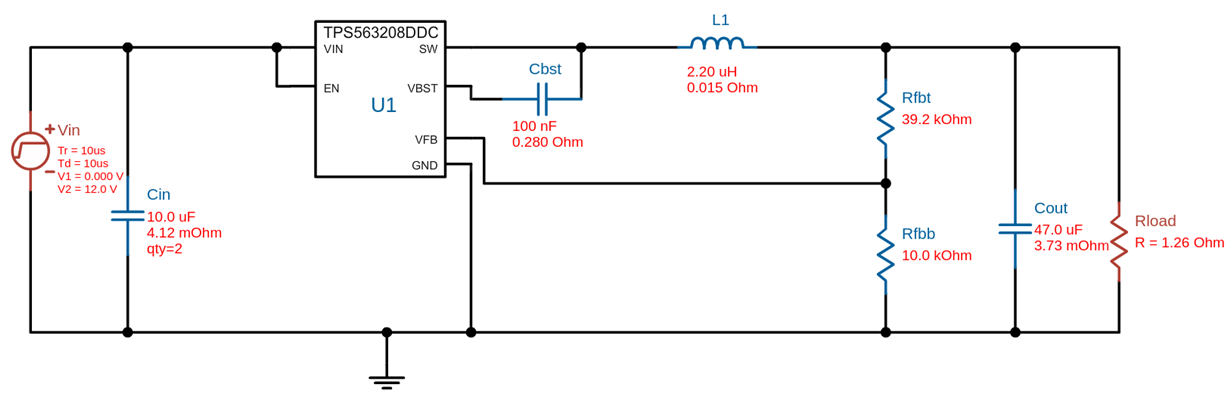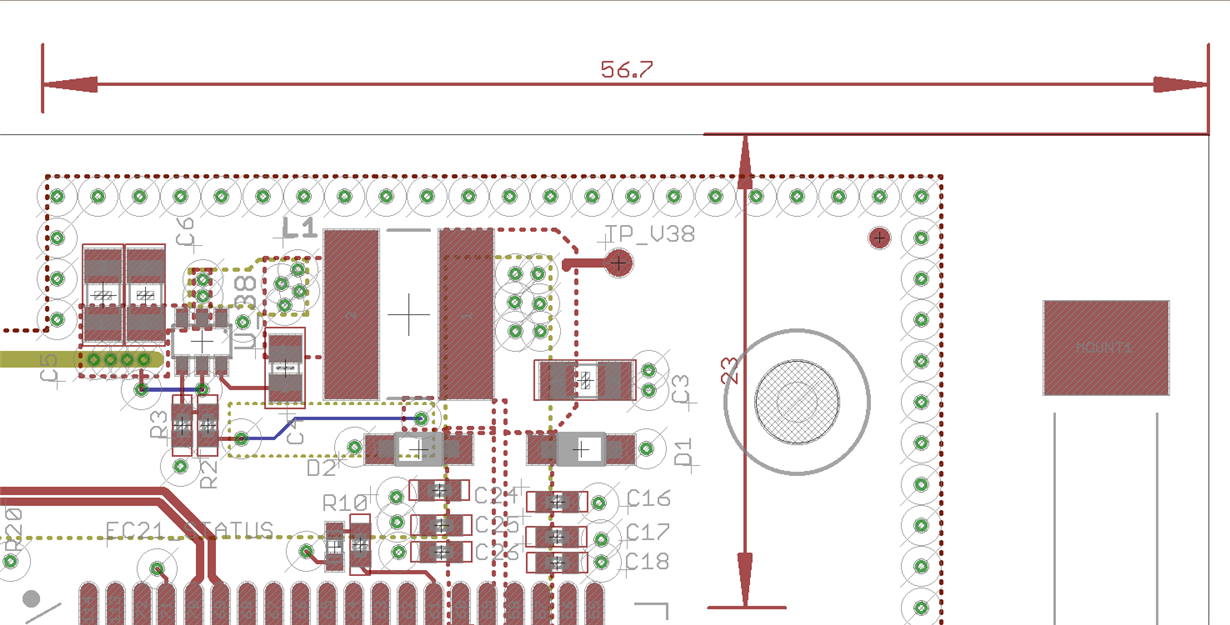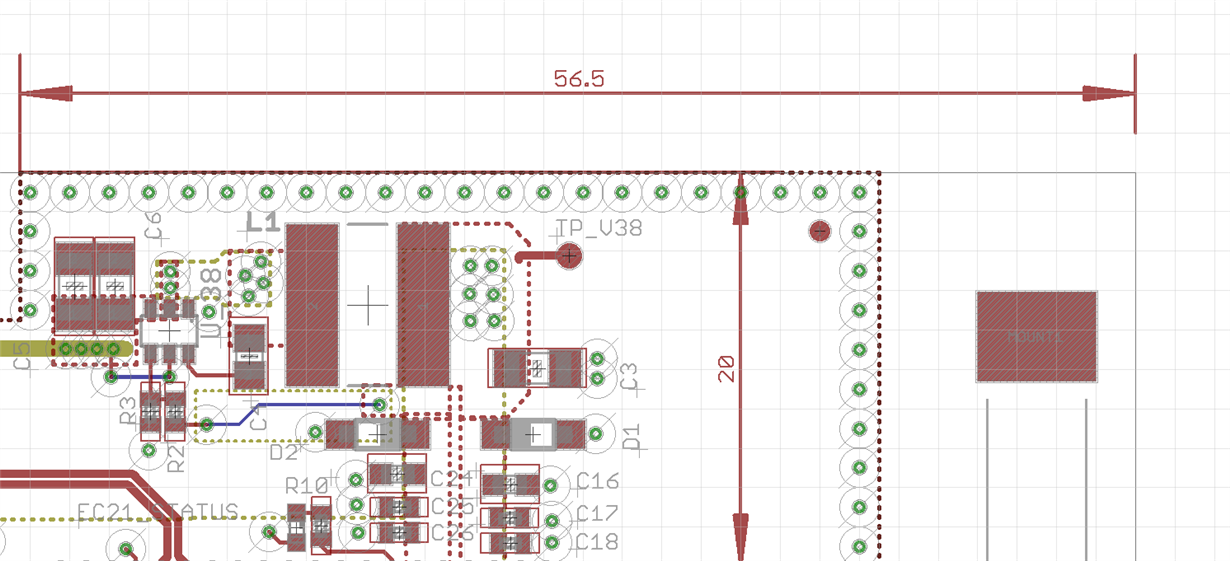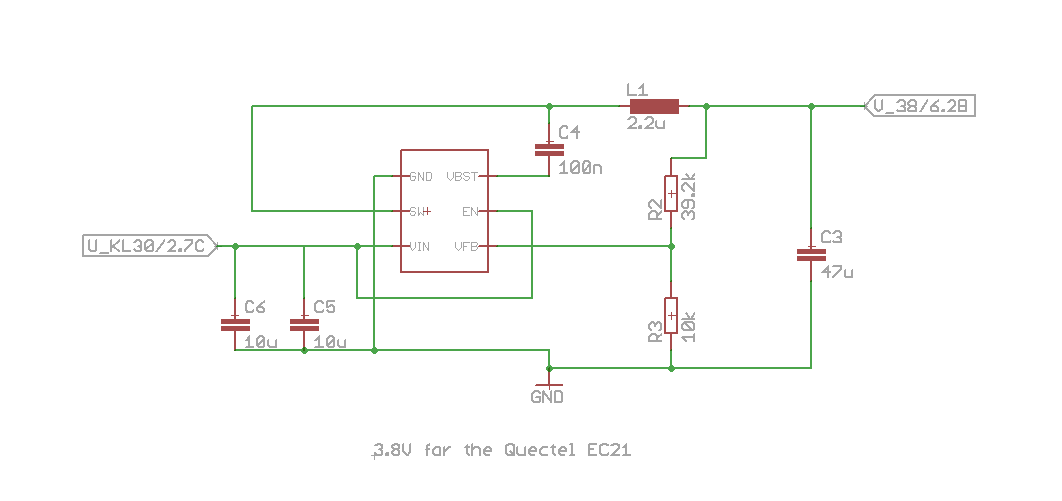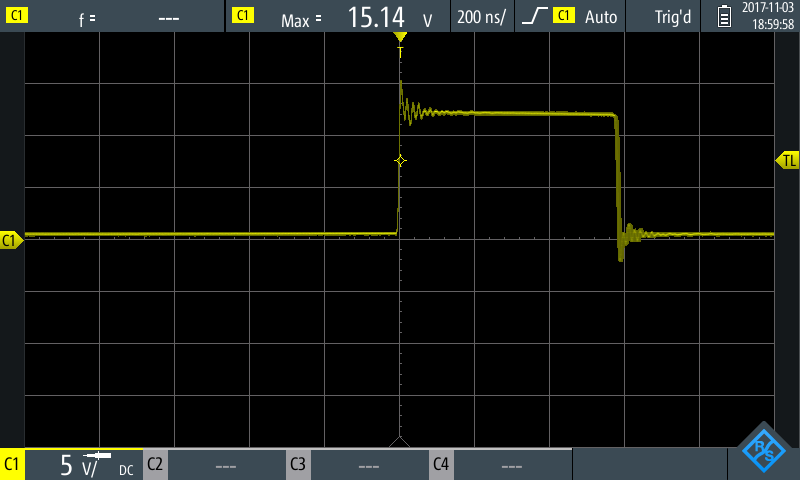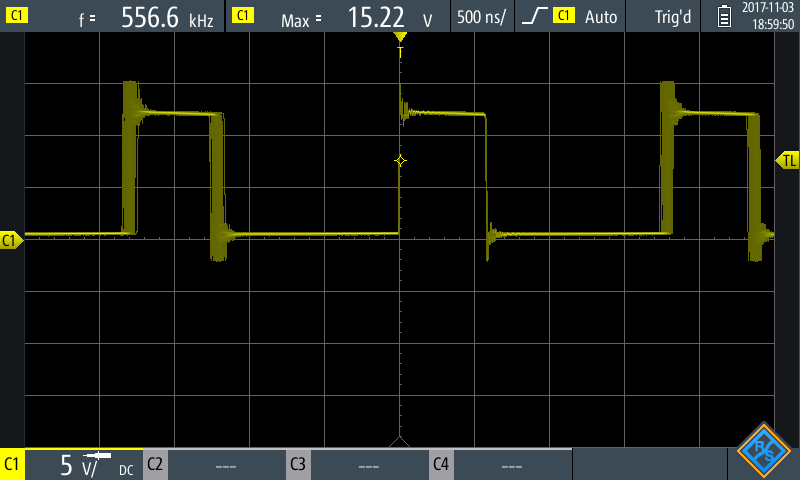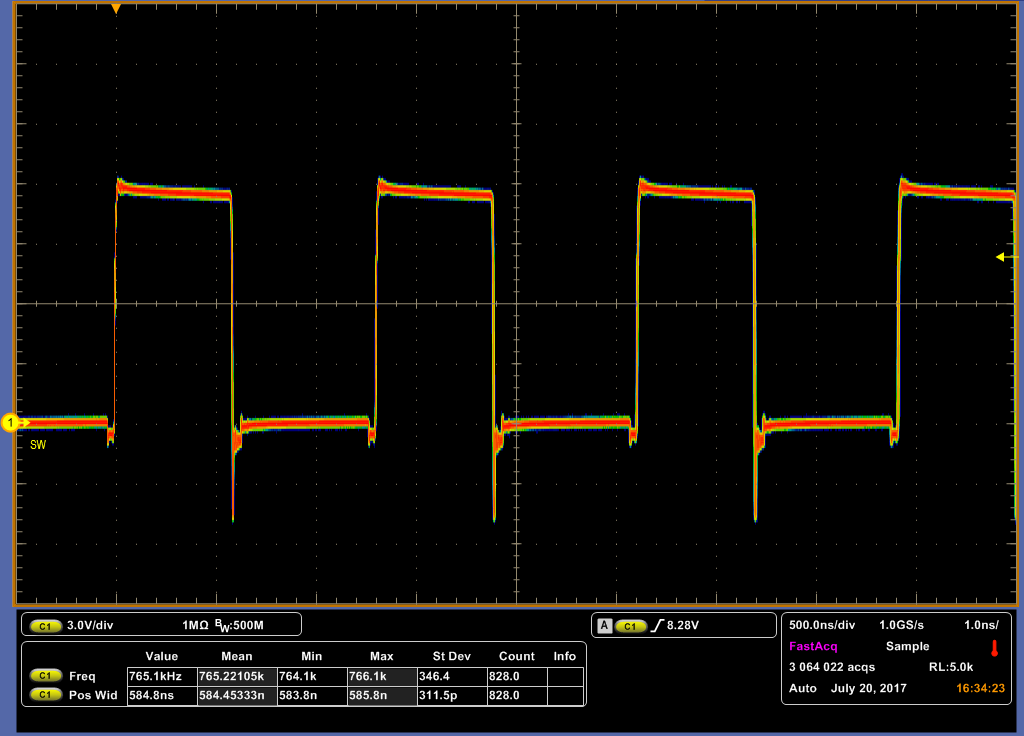Hello TI,
we are using the TPS563208 to step down 12V to 3.8 V to power a Quectel EC21 Modem. Please find attached the schematics as generated by the TI design tool.
Cout 47u C-EUC1206 C1206 CAPACITOR,6.3 V, ± 10%, X6S
2 x Cin 10u C-EUC1206 C1206 CAPACITOR, 25 V, ± 10%, X7R
With our first prototype using the same schematic no audible noise was observed. However with the second prototype with a different Layer thickness, we are observing audible noise from the device especially when the modem is sending GSM data. The modem datasheet specifies a voltage drop of upto 400mV during such transmission bursts.
1. Is the noise from the MLCCs 'singing'? I've read this note form TI but I'm not sure any of the recommended solutions could work for us. Would moving the capacitors to the edge help?
2. How can I be sure that this singing is not from the inductor?
3. Do you forsee any long term functional problems if this singing is not eliminated?
Thank You!


